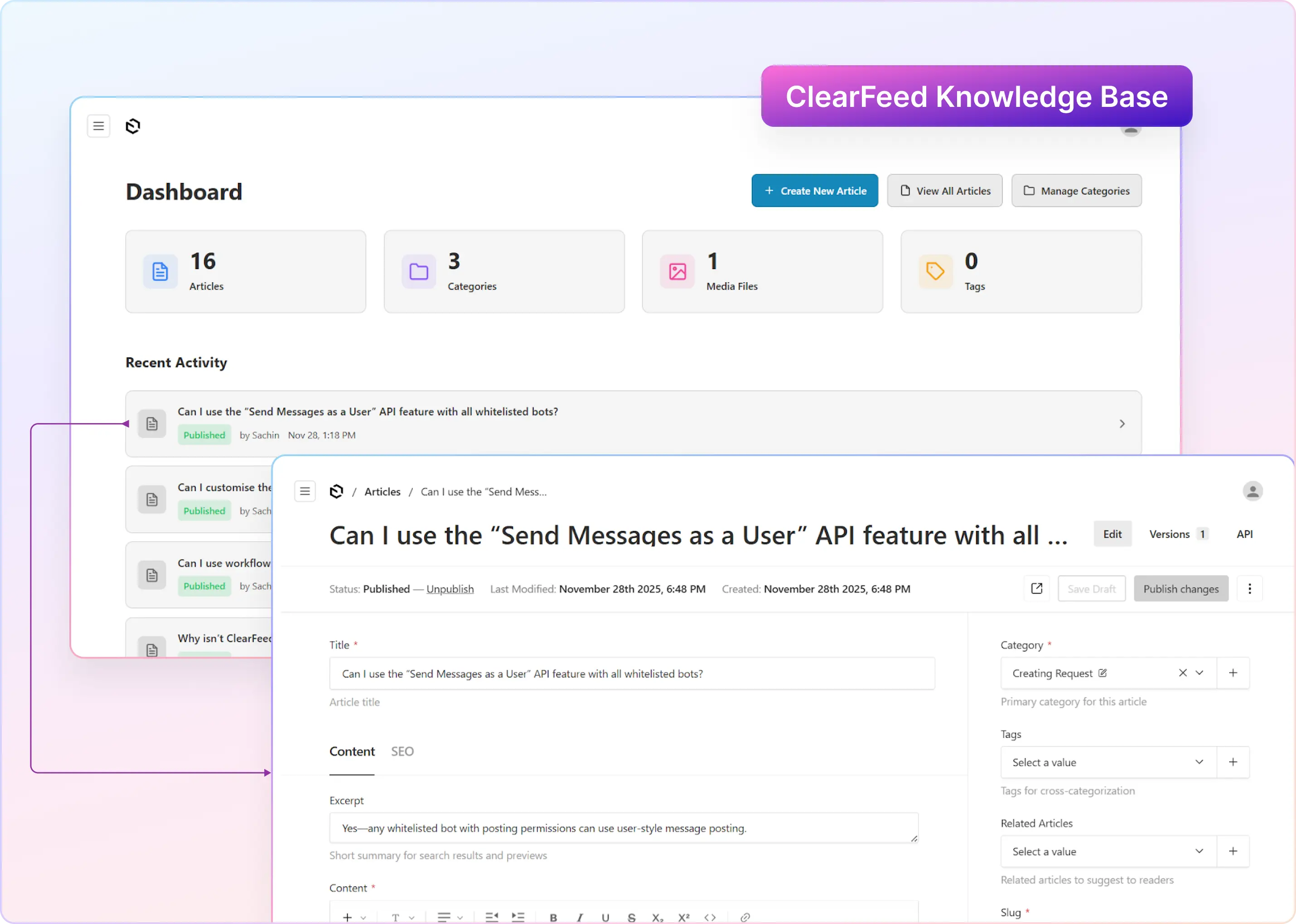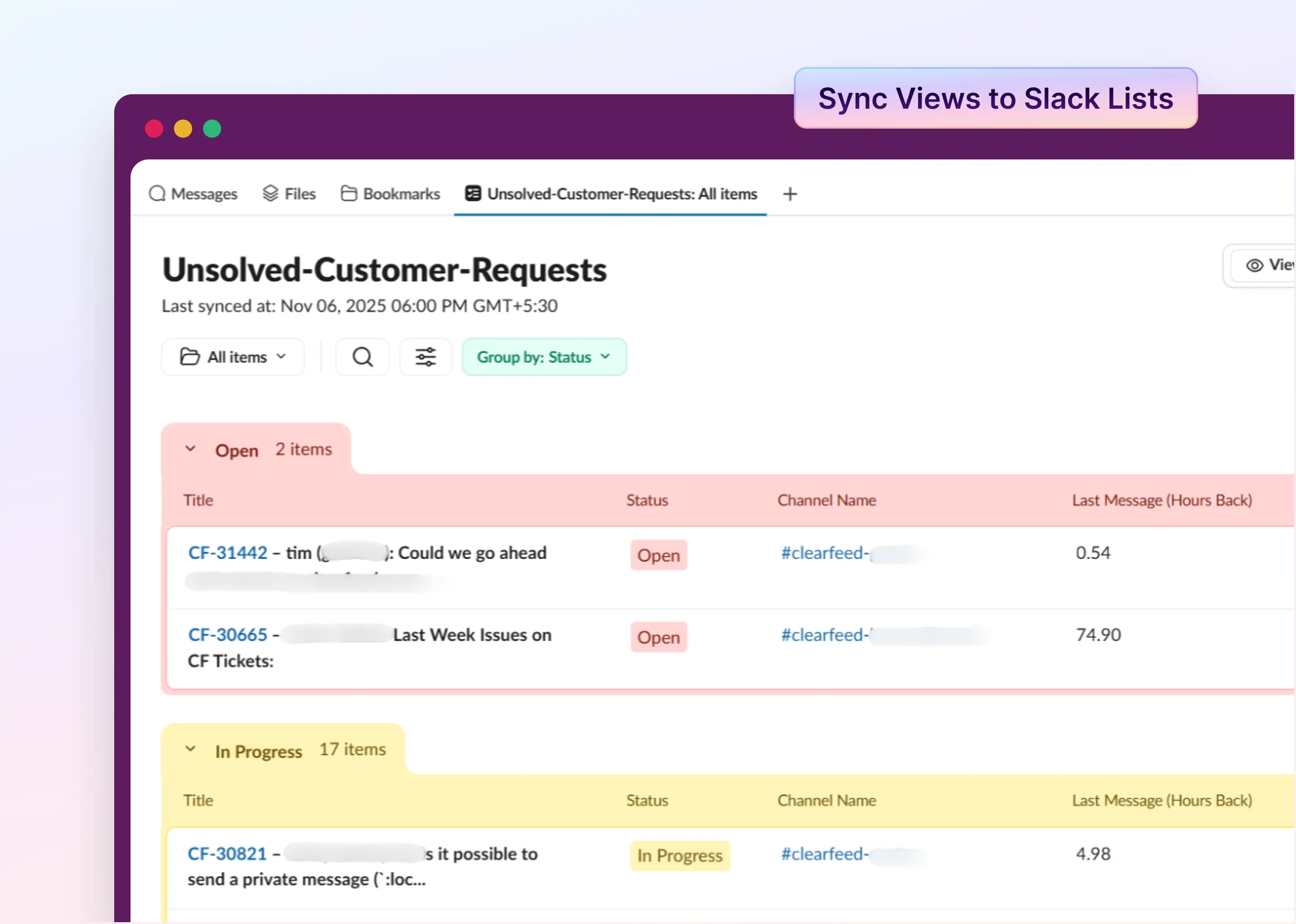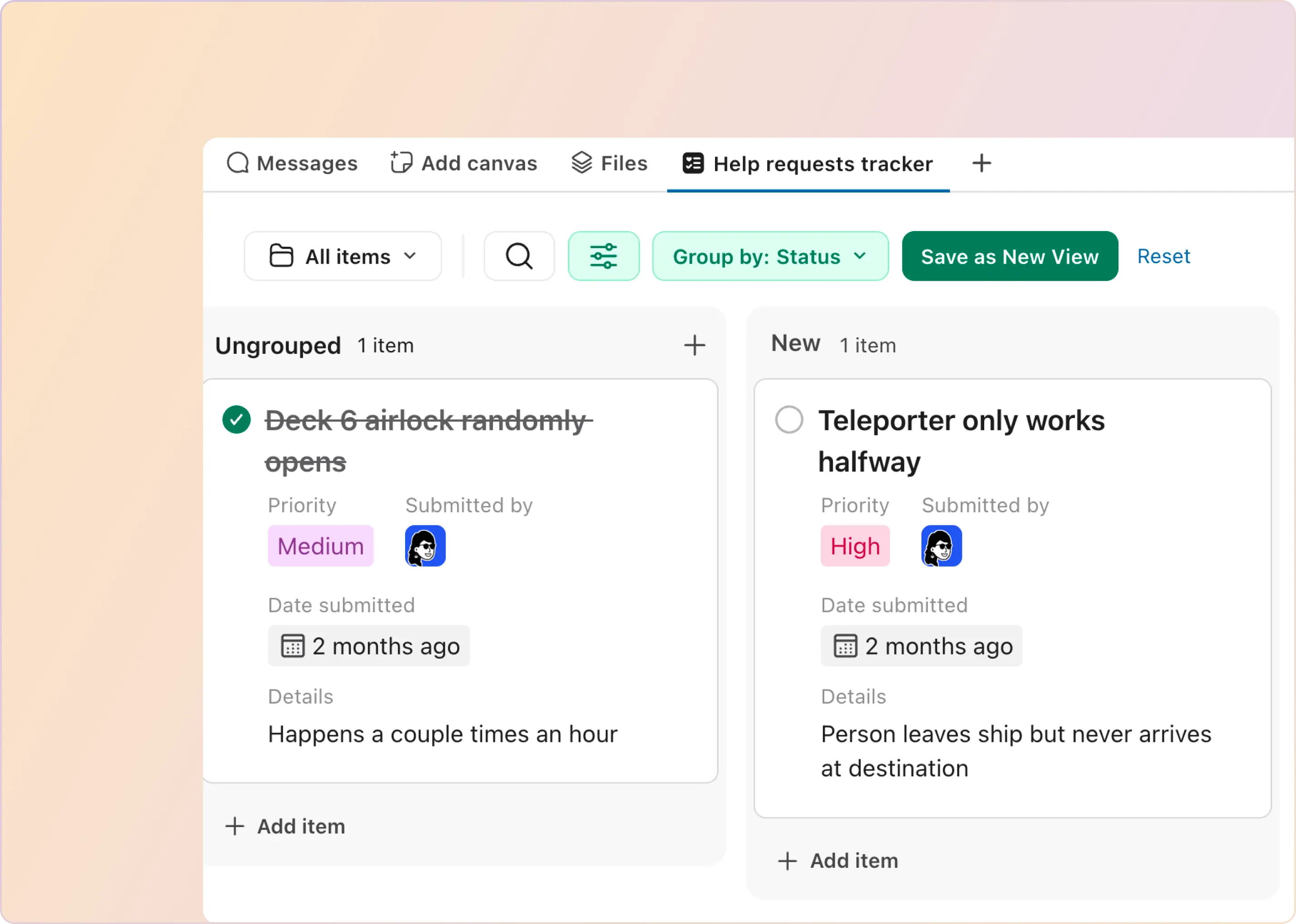Keeping customers engaged is tough. Businesses must be flexible and available on various communication platforms to stay connected. Slack has become a popular tool for workplace communication and remote teamwork. However, as companies grow, Slack can become messy and less effective.
This blog post will address common Slack management issues and provide best practices for maximum productivity. We'll show you how to use Slack's features and combine them with other tools to improve your team's communication.
Common Pitfalls of Using Slack for Communication
While Slack offers many benefits, its popularity can lead to some hurdles, especially as your company expands. Here are some common issues teams face:
- Information overload: Important messages can get buried in busy channels, making it difficult to find critical information when needed.
- Notification fatigue: The constant stream of Slack notifications can overwhelm users, distracting them from their actual work and reducing productivity.
- Channel confusion: As the number of channels grows, it becomes challenging to navigate and find the right place for discussions. This "channel sprawl" can lead to inactive channels cluttering the workspace.
- Naming inconsistencies: Lack of clear naming conventions for channels can make it hard for users to understand the purpose of each channel, leading to misuse or underuse.
- Privacy concerns: Inappropriate use of private channels can create information silos, hindering transparency and collaboration within the organization.
- Training gaps: Without proper guidance on effective Slack usage, team members may struggle to leverage the platform's full potential, leading to inefficient communication.
- Etiquette issues: Lack of clear rules for messaging in public channels can result in unprofessional communication or unnecessary disruptions.
- Outdated connections: Failure to clean up old Slack Connect users can pose security risks and clutter the user list.
- Incomplete profiles: When users don't fill out their profiles completely, it can hinder collaboration and make it difficult for team members to identify the right person for specific tasks.
- Information retrieval challenges: As conversations accumulate, finding specific information becomes increasingly difficult, potentially leading to duplicate discussions or missed insights.
If ignored, these issues can slow work, annoy team members, and cause missed messages. As your team gets bigger, it's important to tackle these problems head-on.
Best Practices for Setting up a Slack Workspace
Let's dive deep into making your Slack workspace the best it can be. We'll cover everything from setting up guidelines to creating a positive culture. Ready? Let's go!
1. Set Some Ground Rules (But Keep It Cool)
Creating clear guidelines helps everyone use Slack effectively. Here's what to consider:
- Profile pictures: Encourage real photos. It helps put faces to names and builds a sense of community. No memes or avatars.
- Public vs. private channels: Promote transparency by using public channels when possible. Save private channels for sensitive discussions only.
- Threading: Encourage using threads for conversations. It keeps channels tidy and makes following discussions easier.
- New channel creation: Set guidelines on when to create a new channel versus using direct messages or existing channels.
- Communication etiquette: Emphasize "praise publicly, critique privately" to maintain a positive environment.
- Knowledge sharing: Encourage asking questions in public channels rather than direct messages. It helps spread the information!
2. Create Channels That Make Sense
Organizing your channels can make a big difference. Try these ideas:
- #general for company-wide announcements: Limit posting rights to management to avoid clutter.
- Location or team-specific announcement channels: Create separate channels for different offices or departments.
- Fun channels: Set up #random for casual chats and #celebrate-wins for sharing successes.
- Interest-based channels: Create spaces for hobbies like #hiking, #foodie, or #pet-lovers. It helps build connections beyond work!
3. Keep Your Channels Tidy
A well-organized Slack is a happy Slack. Here's how to maintain order:
- Use consistent prefixes: Stick to your naming convention (#proj-, #team-, #dept-, etc.) as consistent prefixes make it easier to identify and categorize channels quickly.
- Regular clean-up: Review and archive inactive channels periodically to prevent clutter and maintain a streamlined workspace.
- Project lifecycle: Encourage archiving project channels once the project is complete to reduce distractions and keep focus on current work.
- Use management tools: Try apps like Channitor to identify and clean up unused channels, allowing for more efficient use of the platform.
- Balance is key: Aim for focused channels without creating too many. It's a fine line between organization and chaos!
4. Help Everyone Get Slack-Savvy
Empower your team with Slack knowledge:
- Onboarding: Create a comprehensive guide for new users covering Slack basics and best practices.
- Micro-learning: Develop short, engaging videos or workshops on specific Slack features.
- Integration education: Show how to use third-party apps and workflows within Slack.
- Information management: Teach techniques like muting channels, using threads, and organizing channels into sections.
- Etiquette training: Cover proper use of @mentions and @here (use sparingly!).
- Channel navigation: Guide users on posting in appropriate channels and gently redirect when needed.
5. Use Slack's Cool Features
Slack has tons of built-in features to make life easier:
- Sections: Organize channels into groups like "High Priority," "Projects," and "Social."
- Bookmarking: Use "Save for later" for important messages you want to revisit.
- Reminders: Set reminders for tasks or follow-ups directly in Slack.
- Emoji reactions: Encourage their use to reduce unnecessary responses and add some fun.
- Message management: Make it a habit to mark messages as read and review all messages daily.
- Workflows: Explore Slack Workflows and integrations to automate simple tasks.
6. Make Information Easy to Find
Help your team find what they need quickly:
- Search skills: Train users on effective search techniques using shortcuts like Cmd+G and Cmd+K (Ctrl for Windows).
- AI assistants: Consider using bots like ClearFeed to answer questions from company docs and past chats.
- External tools: Encourage capturing important discussions to tools like Jira or Asana for long-term reference using 2-way syncing apps.
- Request tracking: Go beyond Slack’s built in Save-Later and Reminders - Use tools to track and sync requests in important channels with Slack Ticketing systems.
7. Create a Positive Slack Vibe
Foster a welcoming and productive Slack culture:
- Conflict management: Strongly discourage public conflicts. Guide people to resolve issues privately or offline.
- Celebration station: Make a big deal out of wins and milestones in dedicated channels.
- Inclusive environment: Ensure all team members feel welcome to participate in discussions.
- Lead by example: Have leadership actively engage in a positive, productive manner on Slack.
Conclusion: A Well-Organized Slack Is a Productive Slack
Slack is becoming crucial for many companies, but it can be chaotic if not managed properly. To make Slack more effective, companies should:
- Establish clear guidelines for its use
- Provide thorough training for everyone
- Utilize Slack's built-in features and add extra tools to enhance functionality
For these changes to succeed, it's important to get everyone involved. Ask your team for their opinions, and be ready to adjust things if needed. With some effort and good planning, you can make Slack a valuable tool for your company.
It's also essential to find a balance between productivity and friendly interaction. This will help transform Slack into a space where people can collaborate efficiently and enjoy communicating with each other. If you follow these suggestions, your team can improve their cooperation and accomplish more together.

















